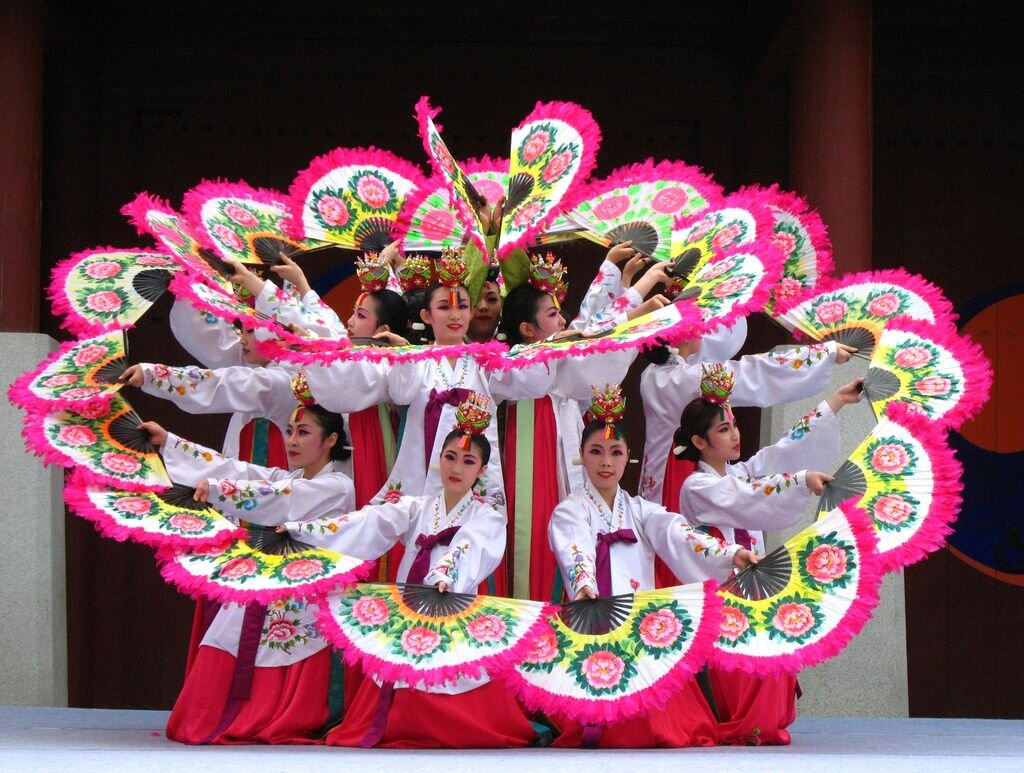Learning Traditional Korean Fan Dancing as a Foreigner
Image via Pinterest
I learned Korean fan dancing with a professional while in Korea, and now I’m searching for the joy that it brought me once again.
When I was in Korea on the NSLI-Y scholarship, we were given a choice of cultural activities. We could do a cooking class, Korean fan dancing, taekwondo, or traditional Korean drumming. And, of course, what did I pick? Korean fan dancing. At the time, I had Googled it and thought it seemed so interesting.
On the first day of class, We had trekked all the way from the subway station next to Ewha Womans University to a familiar area, one that seemed rundown, with a distinct lack of foreigners. We were often stared at by the local high schoolers heading to their hagwon, because we were such a large concentration of foreigners crowding the narrow streets. Our studio was at the bottom of a vegan cafe—a rarity in South Korea at the time—that happened to have a studio space attached to it.
There, we were given our fans with bright pink feathers, and met our instructor. She was a tall woman who always wore all black, and opened the fans with a glorious, sudden snap. She didn’t speak much English, instead choosing to softly shout in Korea, gracefully moving her body to the music with us.
It was difficult to understand her at time, but as she shouted rose, we knew to get into flower formation, twirling our fans left and right like the sway of the petals in the breeze, and to snap them as the beat of the drum hit.
What’s special about Korean fan dancing is that it is always done by an ensemble of women. It is rooted in traditional Korean shamanistic dance, and is often performed to instrumental folk songs. Our teacher was a famous fan dancer and, on the first day, proudly showed us videos of her performing.
She looked so stunning in the traditional hanbok and her hair tied back into a tight bun. She moved so elegantly, like a crane dancing its wings on the water. I truly wanted to be her, even as she wrenched my body into uncomfortable positions.
I took that class for granted. As I walked 16,000 steps a day and then went to fan dancing class, I griped and complained, but now I would trade it for the world. I miss the vegan treats the cafe owner would slip us after class, the carrot cake was delicious.
I miss the way seonsaengnim would always sigh when I of all people (the usual culprit) messed up. And, most of all, I miss the way the fans fluttered in the darkness of the studio space, their hot pink feathers drifting to the hardwood floor.
By the ending ceremony of the program, our class wasn’t very good at fan dancing, and I will admit, I was terrible at it, but, now, I find myself wanting to find a local class in it again.
I recently watched videos of other dance cultures, such as the ones prominent in India and Indonesia, and I find dance to be such a beautiful expression of history. Korean fan dancing may be a new phenomenon, but it made me feel connected to the country I was inhabiting by mimicking the movements and dances that have been passed down throughout history.
I may not be a good dancer, but I really took something out of this experience. If you have the chance to learn a country’s native dance while in the country, I highly recommend it. It’s a truly spiritual experience, one that cannot be replicated from just learning the language. If I could do it all over again, I would. Who cares if I’m a terrible dancer?
